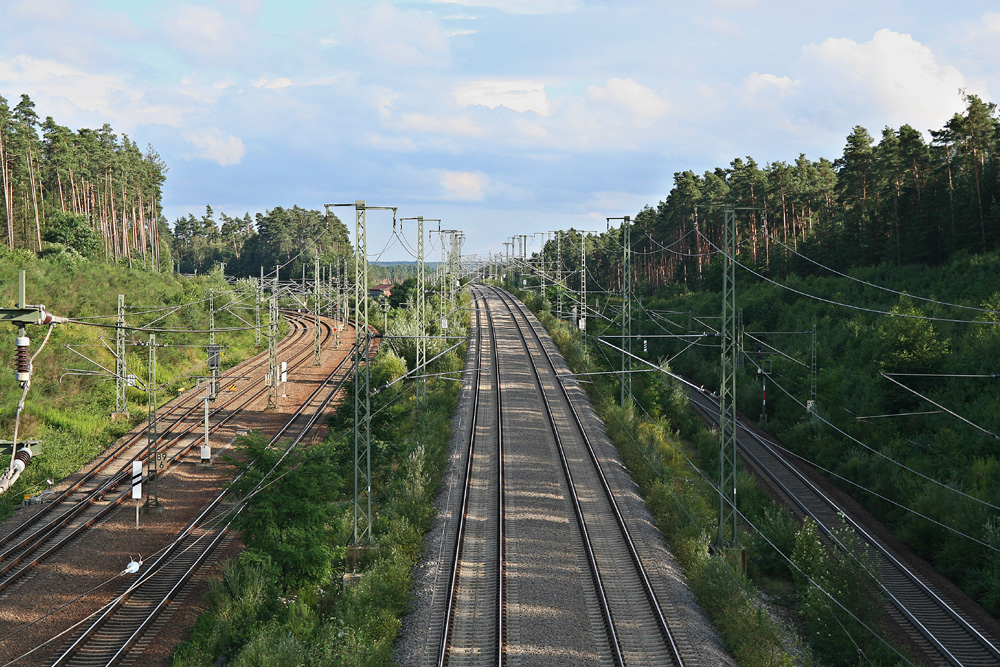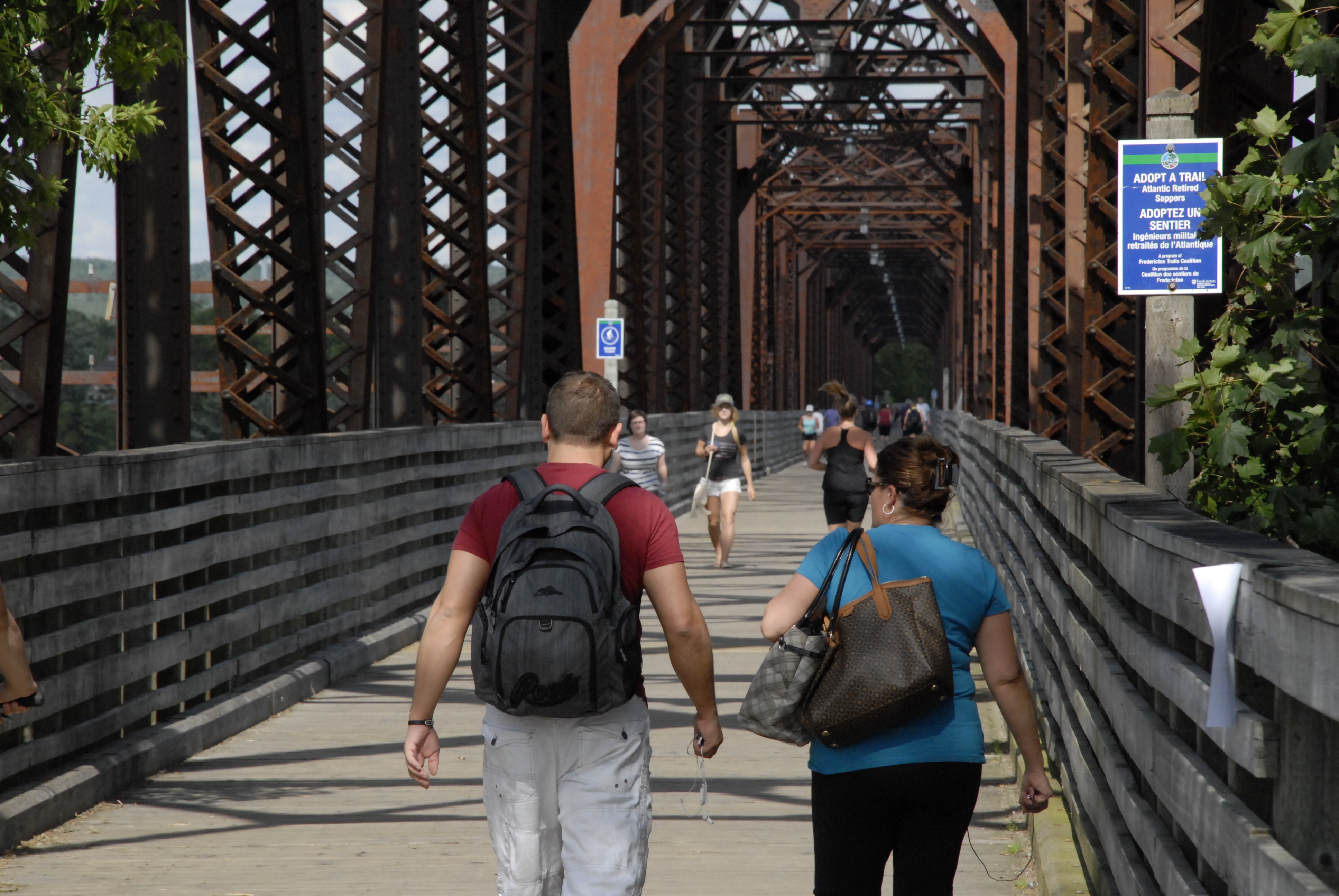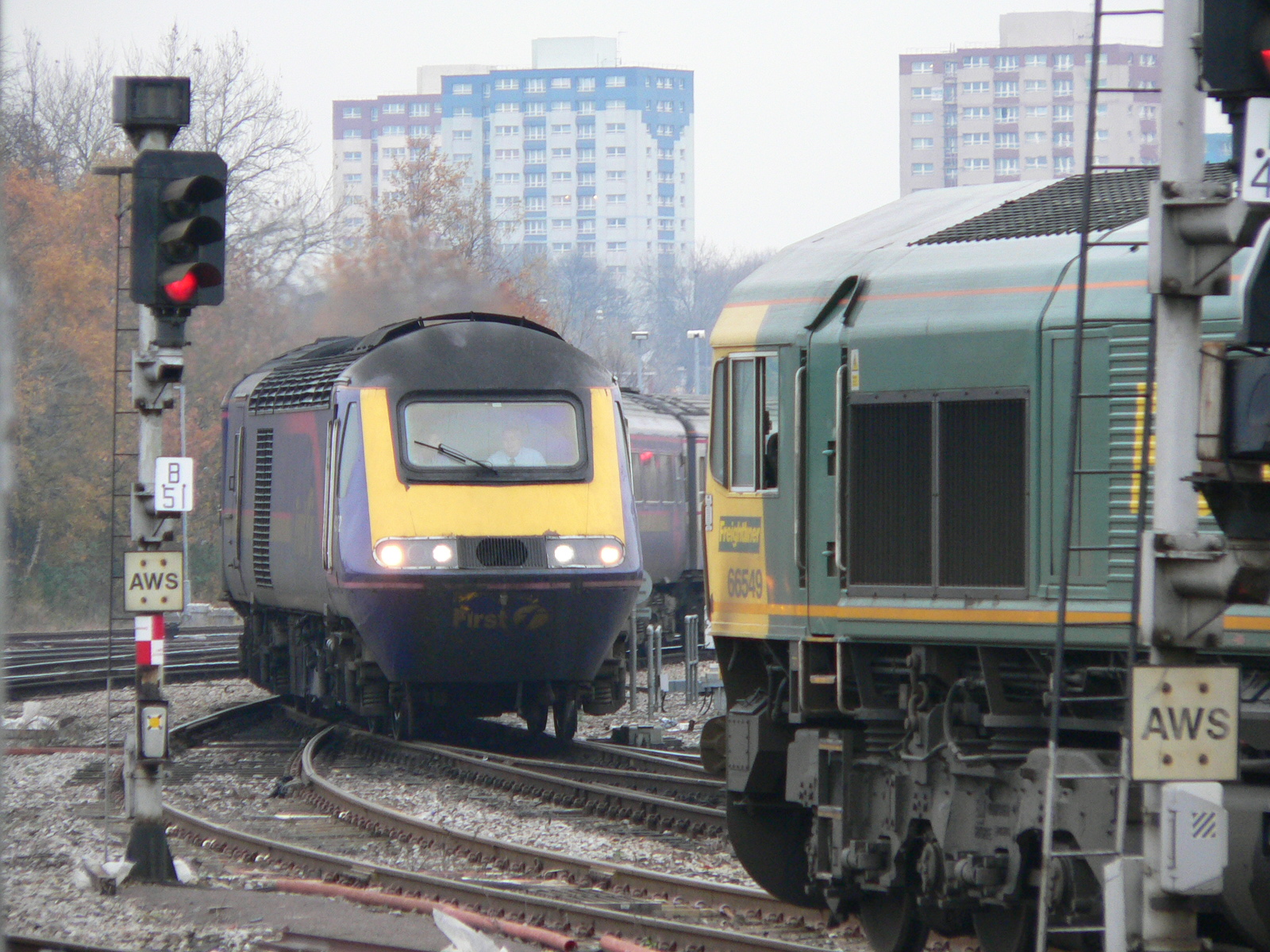|
Saluda Grade
Saluda Grade is the steepest standard-gauge mainline railway grade in the United States.. Owned by the Norfolk Southern Railway as part of its W Line, Saluda Grade in Polk County, North Carolina, gains in elevation in less than between Melrose and Saluda. Average grade is 4.24 percent for and maximum is 4.9% for about . In late 2001, Norfolk Southern took the grade out of service following a washout. History Captain Charles W. Pearson was assigned to select a route for the Asheville and Spartanburg Railroad to ascend the Blue Ridge front; the area where the rolling hills of the Piedmont end at the foot of the Blue Ridge Mountains. Despite numerous surveys, no route was available for a railroad to ascend the mountains at a tolerable grade, and the best route followed the Pacolet River valley and gorge. The line begins its climb at the bottom of Melrose Mountain, where Tryon is today, at , and continues on the south side of the Pacolet valley. At Melrose, the Saluda Grade ... [...More Info...] [...Related Items...] OR: [Wikipedia] [Google] [Baidu] |
Spur Line
A branch line is a phrase used in railway terminology to denote a secondary railway line which branches off a more important through route, usually a main line. A very short branch line may be called a spur line. Industrial spur An industrial spur is a type of secondary track used by railroads to allow customers at a location to load and unload railcars without interfering with other railroad operations. Industrial spurs can vary greatly in length and railcar capacity depending on the requirements of the customer the spur is serving. In heavily industrialized areas, it is not uncommon for one industrial spur to have multiple sidings to several different customers. Typically, spurs are serviced by local trains responsible for collecting small numbers of railcars and delivering them to a larger yard, where these railcars are sorted and dispatched in larger trains with other cars destined to similar locations. Because industrial spurs generally have less capacity and traff ... [...More Info...] [...Related Items...] OR: [Wikipedia] [Google] [Baidu] |
Railroad Classes
In the United States, railroad carriers are designated as Class I, II, or III, according to annual revenue criteria originally set by the Surface Transportation Board in 1992. With annual adjustments for inflation, the 2019 thresholds were US$504,803,294 for Class I carriers and US$40,384,263 for Class II carriers. (Smaller carriers were Class III by default.) There are seven Class I freight railroad companies in the United States including two Canadian carriers with subsidiary trackage in the United States: BNSF Railway, Canadian National Railway (via its subsidiary Grand Trunk Corporation), Canadian Pacific Railway (via its subsidiary Soo Line Corporation), CSX Transportation, Kansas City Southern Railway, Norfolk Southern Railway, and Union Pacific Railroad. (Mexico's Ferromex and Kansas City Southern de México would qualify as Class I, but do not operate within the United States.) In addition, the national passenger railroad in the United States, Amtrak, would qualify ... [...More Info...] [...Related Items...] OR: [Wikipedia] [Google] [Baidu] |
Watco
Watco Companies, L.L.C. (Watco) is a transportation company based in Pittsburg, Kansas, formed in 1983 by Charles R. Webb. Watco was composed of four divisions: transportation, mechanical, terminal and port services, and compliance. Watco is the owner of Watco Transportation Services, L.L.C. (WTS), which operates 41 short line railroads in the U.S. and Australia. It is one of the largest short line railroad companies in the United States. As of December 2018, it operates on of leased and owned track. Also under transportation is the contract switching the company provides service for 30 customers. That was the service that Watco originally offered before it branched out into other areas. Watco's mechanical division has 19 car repair shops and is one of the largest mechanical services provider in the United States. They provide program, contract and emergency repairs. These services include maintenance of all types of cars including tank cars and coal fleets, and the preparatio ... [...More Info...] [...Related Items...] OR: [Wikipedia] [Google] [Baidu] |
Tryon Daily Bulletin
''Tryon Daily Bulletin'' is an American, English language daily newspaper based in Tryon, Polk County, North Carolina; it also serves parts of Spartanburg and Greenville counties in South Carolina. History Known as "The World’s Smallest Daily Newspaper", it was established in 1928 by Seth Vining Sr. It had a readership of 4,250 in 2019 and its website had 30,000 visitors. Jeff Byrd purchased the paper in 1989 and sold it in 2010 to Boone Newspapers Inc. of Tuscaloosa, Ala. Its offices are housed in the Bank of Tryon Building, listed on the National Register of Historic Places in 2008. The paper doesn't carry any wire stories; as its publisher, Jeff Byrd, said in 1993, "It's all local. It's a community paper. That's what people want here." It features columns from 15 local residents, reader photos, a large letters to the editor section and a community calendar. See also * List of newspapers in North Carolina There have been newspapers in North Carolina since the ''Nor ... [...More Info...] [...Related Items...] OR: [Wikipedia] [Google] [Baidu] |
Rails-to-trails
A rail trail is a shared-use path on railway right of way. Rail trails are typically constructed after a railway has been abandoned and the track has been removed, but may also share the right of way with active railways, light rail, or streetcars ( rails with trails), or with disused track. As shared-use paths, rail trails are primarily for non-motorized traffic including pedestrians, bicycles, horseback riders, skaters, and cross-country skiers, although snowmobiles and ATVs may be allowed. The characteristics of abandoned railways—gentle grades, well-engineered rights of way and structures (bridges and tunnels), and passage through historical areas—lend themselves to rail trails and account for their popularity. Many rail trails are long-distance trails, while some shorter rail trails are known as greenways or linear parks. Rail trails around the world Americas Bermuda The Bermuda Railway ceased to operate as such when the only carrier to exist in Bermuda folded in 19 ... [...More Info...] [...Related Items...] OR: [Wikipedia] [Google] [Baidu] |
Passenger Train
A passenger train is a train used to transport people along a railroad line. These trains may consist of unpowered passenger railroad cars (also known as coaches or carriages) hauled by one or more locomotives, or may be self-propelled; self propelled passenger trains are known as multiple units or railcars. Passenger trains stop at stations or depots, where passengers may board and disembark. In most cases, passenger trains operate on a fixed schedule and have priority over freight trains. Passenger trains may be made up of a number of passenger cars hauled by one or more locomotives, or may be made up of self-propelled railcars. Car design and the general safety of passenger trains have dramatically evolved over time, making travel by rail remarkably safe. Some passenger trains, both long-distance and short-distance, use bi-level (double-decker) cars to carry more passengers per train. Passenger trains hauled by locomotives are more expensive to operate than multiple ... [...More Info...] [...Related Items...] OR: [Wikipedia] [Google] [Baidu] |
Washout (erosion)
A washout is the sudden erosion of soft soil or other support surfaces by a gush of water, usually occurring during a heavy downpour of rain (a flash flood) or other stream flooding. These downpours may occur locally in a thunderstorm or over a large area, such as following the landfall of a tropical cyclone. If a washout occurs in a crater-like formation, it is called a sinkhole, and it usually involves a leaking or broken water main or sewerage pipes. Other types of sinkholes, such as collapsed caves, are not washouts. Widespread washouts can occur in mountainous areas after heavy rains, even in normally dry ravines. A severe washout can become a landslide, or cause a dam break in an earthen dam. Like other forms of erosion, most washouts can be prevented by vegetation whose roots hold the soil and/or slow the flow of surface and underground water. Deforestation increases the risk of washouts. Retaining walls and culverts may be used to try to prevent washouts, although par ... [...More Info...] [...Related Items...] OR: [Wikipedia] [Google] [Baidu] |
Level Crossing
A level crossing is an intersection where a railway line crosses a road, path, or (in rare situations) airport runway, at the same level, as opposed to the railway line crossing over or under using an overpass An overpass (called an overbridge or flyover in the United Kingdom and some other Commonwealth countries) is a bridge, road, railway or similar structure that crosses over another road or railway. An ''overpass'' and ''underpass'' together form ... or tunnel. The term also applies when a light rail line with separate right-of-way or reserved track crosses a road in the same fashion. Other names include railway level crossing, railway crossing (chiefly international), grade crossing or railroad crossing (chiefly American), road through railroad, criss-cross, train crossing, and RXR (abbreviated). There are more than 100,000 level crossings in Europe and more than 200,000 in North America. History The history of level crossings depends on the locatio ... [...More Info...] [...Related Items...] OR: [Wikipedia] [Google] [Baidu] |
Railway Signalling
Railway signalling (), also called railroad signaling (), is a system used to control the movement of railway traffic. Trains move on fixed rails, making them uniquely susceptible to collision. This susceptibility is exacerbated by the enormous weight and inertia of a train, which makes it difficult to quickly stop when encountering an obstacle. In the UK, the Regulation of Railways Act 1889 introduced a series of requirements on matters such as the implementation of interlocked block signalling and other safety measures as a direct result of the Armagh rail disaster in that year. Most forms of train control involve movement authority being passed from those responsible for each section of a rail network (e.g. a signalman or stationmaster) to the train crew. The set of rules and the physical equipment used to accomplish this determine what is known as the ''method of working'' (UK), ''method of operation'' (US) or ''safeworking'' (Aus.). Not all these methods require the ... [...More Info...] [...Related Items...] OR: [Wikipedia] [Google] [Baidu] |
Landrum, South Carolina
Landrum is a city in Spartanburg County, South Carolina, United States. The population was 2,376 at the 2010 census. Landrum was founded in 1880 and incorporated in 1912. It is located just west of Interstate 26 between Spartanburg and Asheville, North Carolina. History The Landrum area was settled ''circa'' 1760 by homesteaders from Pennsylvania, Maryland and Virginia. There, they built a fort approximately two miles from the current City of Landrum. The town of Landrum was founded in 1880 after the railroad was extended north from Spartanburg and named after John Gill Landrum, who gave the land for construction of the local depot. Landrum was incorporated as a town three years later. In 1973, it was made into a city. Geography Landrum is located at (35.175326, -82.186036). The city is concentrated around the intersection of U.S. Route 176 and South Carolina Highway 14, just south of the North Carolina-South Carolina border. According to the United States Census Bureau ... [...More Info...] [...Related Items...] OR: [Wikipedia] [Google] [Baidu] |
East Flat Rock, North Carolina
East Flat Rock is an unincorporated area and census-designated place (CDP) in Henderson County, North Carolina, United States. The population was 4,995 at the 2010 census, up from 4,151 at the 2000 census. It is part of the Asheville Metropolitan Statistical Area. Geography East Flat Rock is located in southeastern Henderson County at (35.284583, -82.419013). It is bordered to the west by the village of Flat Rock and to the northwest by unincorporated Barker Heights. U.S. Route 176 (Spartanburg Highway) is the main road through East Flat Rock, leading northwest to Hendersonville, the county seat, and southeast to Saluda. Interstate 26 runs along the eastern edge of the community, with access from Exit 53 (Upward Road). I-26 leads north to Asheville and southeast to Spartanburg, South Carolina. According to the United States Census Bureau, the East Flat Rock CDP has a total area of , of which , or 0.27%, are water. Demographics 2020 census As of the 2020 United Stat ... [...More Info...] [...Related Items...] OR: [Wikipedia] [Google] [Baidu] |






